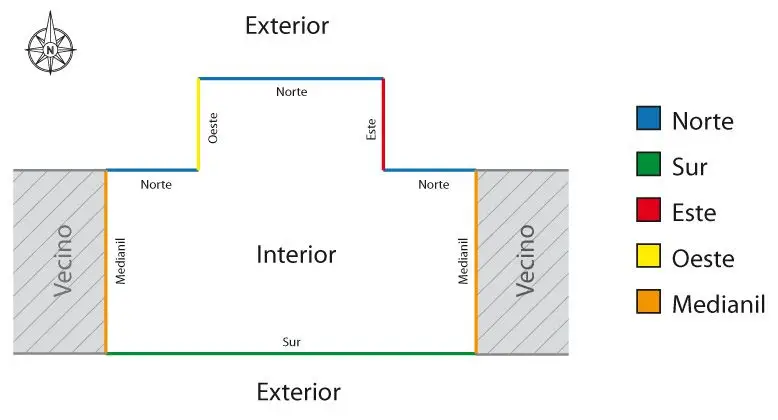This calculator allows you to estimate the climate control needs (thermal loads) of a building, both in summer and winter. It also helps estimate the monthly energy consumption over a month.
Instructions
- Enter the exterior temperature for both periods, based on the temperatures in your location. You can also modify the interior temperatures, although regulations specify 21 degrees in winter and 24 in summer.
- Enter the building’s data: surface area (in m2), height (in m), and occupancy (in people).
- Enter the linear meters of facade for each orientation. By facade, we mean only those walls in contact with the exterior, excluding interior walls (between rooms) or party walls (in contact with other dwellings or premises in the building).
- Enter the linear meters of party walls, considering all walls of your building that border another location, regardless of their orientation.
- The following image shows an example of how to correctly account for facades (with orientation) and party walls (without orientation). Click on the image to enlarge.

- Enter the area of windows based on their orientation. Include other openings like gallery doors, etc. For example, if on the north facade you have 3 windows of 1.5 x 1.2, you would note 3x1.5x1.2 = 5.4 m2 in the north window box. It’s important to note that you need to input the total transmittance of the opening, meaning both glass and frame. The window frame can have a significant transmittance, and sometimes manufacturers only provide the glass value, which is lower. Ask for the transmittance value for the entire opening.
- Choose the type of floor and roof in the drop-down menus based on the type of floor above or below yours.
- Fill in the transmittance values for the various elements that make up the building envelope. Transmittance represents the amount of heat that passes through the enclosure. The worse the insulation quality, the higher the transmittance. If your building already exists, it’s difficult to know the transmittance of the enclosures. You can consult a catalog of construction solutions and search for values for your typology, but you might always have doubts, for example, about the insulation thickness. That’s why I’ve provided a range of typical values for each type of enclosure. The lower values correspond to exceptionally well-insulated dwellings. The worse the construction of your building and the older it is, the closer you’ll get to the higher values of the range (you might even have worse values).
Datos entrada
Now, you can use our heating expense calculator to convert this energy consumption into euros, based on the different available energy sources. You just need to take the consumption value in kWh and input it as electric consumption in the other calculator.
